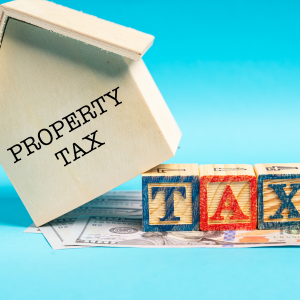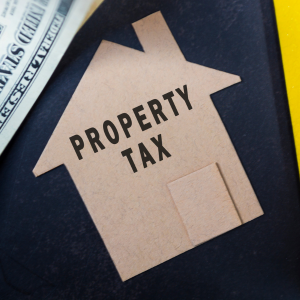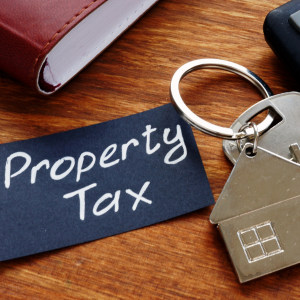
What is the Property Tax Rate in Covina, CA?

In Los Angeles County, the base tax rate for properties is 1.0% of the assessed value for the general levy. However, the “effective” property tax rate that homeowners actually pay relative to market value tends to be higher. For example, for the broader Los Angeles County region, the median effective tax rate is about 1.24% of market value. While there isn’t a publicly cited “exact” effective rate for Covina alone, we can use county-wide averages as a useful benchmark.
How to Estimate Your Tax Bill
Estimating your property tax bill involves three steps:
- Determine your assessed value (for many California homes, this is close to your purchase price or adjusted value under Proposition 13).
- Apply the base 1% levy.
- Add applicable local assessments or voter‐approved rate increases.
For example:
- If your Covina home is assessed at $600,000, the base tax (1%) = $6,000 annually.
- If you use the county median effective rate of ~1.24%, then you might expect an estimated tax bill of around $7,440 (= $600,000 × 1.24%).
This aligns with data for nearby cities: the median effective rate in West Covina, California, is ~1.29%.
Keep in mind: your specific tax bill will depend on local assessments (school bonds, fire district levies, etc.) and any exemptions (senior, disabled veteran, etc.).
Why the “1% rule” doesn’t tell the whole story
Many homeowners hear “your property tax is 1% of the value” and assume that’s all. But in reality:
- The assessed value may differ from the current market value.
- Additional local levies can push the effective rate above 1%.
- Exemptions can reduce your bill.
For example, the Los Angeles County portal confirms 1% base plus other levies.
Therefore, while 1% is a useful starting point, expecting a range of 1.1% to 1.4% of market value is more realistic in the Covina area.
Real Life Example
Imagine you own a single-family home in Covina valued at $800,000.
- Base 1%: $8,000
- Effective estimate at 1.24%: $9,920
Additional local bonds or assessments might add several hundred dollars more. Now imagine your neighbor bought 10 years ago for $400,000 and hasn’t had many value adjustments; their assessed value might still remain significantly lower, thanks to Proposition 13 protections, meaning their effective “tax rate” relative to the market might be even lower. Knowing this helps if you plan to sell, because your tax burden and future tax rise potential affect buyer value and your decision timeline. If you’re considering selling and want to understand your options in today’s market, here’s how Eazy House Sale can help you navigate the process efficiently and make an informed decision.
Understanding Covina Property Tax
In Covina, California, property taxes pay for essential community services and infrastructure. The city-collected taxes contribute to the high quality of life in this thriving Los Angeles suburb. Understanding the nuances of Covina’s property tax rate, including its purpose and the factors that influence its calculation, can assist homeowners in better managing their finances. From secured property assessments to special assessments and appeals, each component is critical in determining your property tax. Let us dig deeper into these components to gain a better understanding of the Covina property tax.
Purpose of Property Tax in Covina
Property taxes in Covina are an important source of revenue for the city, ensuring that public infrastructure and services run smoothly and continue to grow. The primary goal of property tax collection is to fund essential local services such as schools, libraries, and public safety departments, such as police and fire protection. These services rely heavily on consistent property tax revenue to meet the community’s needs. Aside from these core areas, property tax funds contribute to the maintenance and improvement of public spaces such as roads, parks, and recreational facilities, resulting in a more vibrant and functional community for residents.
Covina operates under the jurisdiction of Los Angeles County, which is in charge of property tax collection and allocation. This means that county-specific policies or initiatives can influence how local funds are distributed. Most taxes are based on secured residential and commercial property, ensuring reliable revenue collection. Furthermore, the property tax system allows for assessment appeals, which give property owners a fair opportunity to challenge assessed values and ensure that taxes reflect current market conditions. These mechanisms make the city’s tax system more transparent and equitable.
Overall, property tax revenue helps to maintain Covina’s economic stability by providing a consistent and predictable funding source in the face of economic fluctuations. Despite broader economic trends, the city’s stability enables it to maintain high-quality public services and fund community projects. Property taxes directly enhance the livability and attractiveness of Covina, making it a desirable place to live, work, and invest.
| Factors Influencing Tax | Purpose of Tax | Beneficiaries |
|---|---|---|
| Property Value | Funding Education | Local Schools |
| Location | Infrastructure Maintenance | Community Residents |
| Property Use | Emergency Services | Fire and Police Departments |
| Tax Rates | Public Utilities | Local Government |
This table highlights the factors and purposes of property tax in Covina, showcasing its role in supporting community services and infrastructure.
Factors Affecting Property Tax Amount

Several factors influence the amount of property tax paid in Covina, making it a complicated calculation influenced by both local and county factors. This calculation is based on the property’s assessed value, which is determined by the Los Angeles County Tax Assessor. The county revalues properties on a regular basis to ensure that they reflect current market conditions. Covina’s median property values, which serve as assessment benchmarks, have a direct impact on overall property tax rates. The nature of the property, whether secured or unsecured, is an important factor in determining property tax rates. The majority of property tax calculations are based on secured properties, which include both land and structures. These properties are valued annually in accordance with the county’s assessment policy.
Special assessments imposed by the city or county to fund specific projects or services can have an impact on a property owner’s total tax burden. Another important consideration is whether certain property owners, such as seniors or disabled veterans, are eligible for exemptions or discounts. Exemptions can significantly lower a property’s taxable value, resulting in lower property tax liabilities. Covina residents should investigate these exemptions in order to maximize their potential savings. Property tax rates are also influenced by the overall economic climate and local budgetary needs. In response to increased demand for public services or infrastructure improvements, the city may change special assessment rates. In contrast, as economic activity and property values rise in Covina, so may tax liabilities.
Assessment appeals provide property owners with an important opportunity to contest and potentially reduce their property’s assessed value if they believe it is excessively high. Homeowners can reassess their property by filing an appeal with Los Angeles County, which could result in a lower tax bill. Understanding these factors allows Covina residents to make more informed decisions about homeownership. Property owners who understand the assessment process, appeal options, and available exemptions are better prepared to deal with the complexities of property tax management. Finally, with this understanding, they can advocate for fair assessments and align their financial plans with the realities of local and county tax regulations. For those looking to explore their best options or sell quickly, Eazy House Sale can help guide homeowners through the process with expertise and transparency.
Breakdown of Covina Property Tax Rates
The property tax situation in Covina, California, is a significant source of revenue for the city and county, affecting homeowners throughout the Los Angeles area. Because property taxes pay for important public services, Covina residents should be aware of the current tax rates. This section will explain the current tax rates and how they compare to those in the surrounding areas. By considering these factors, homeowners can make more informed decisions about their property tax bills and be better prepared for future financial obligations associated with property ownership.
Current Tax Rates in Covina
Covina’s property tax rates have a significant impact on residents’ financial obligations in this thriving Southern California community. The Los Angeles County Tax Assessor calculates Covina’s tax rate, which is made up of several components, each serving a specific purpose. California’s Proposition 13 governs the baseline property tax rate, which caps annual increases in assessed property value at 2% unless ownership changes. This regulation ensures that homeowners’ property tax obligations are consistent and predictable over time. Covina, like many other cities in Los Angeles County, seeks to balance fiscal needs with county mandates by increasing taxes to fund local projects and services. Special assessments are frequently used to fund community priorities such as public safety improvements, infrastructure development, and school upgrades, which can significantly raise a homeowner’s overall property tax bill.
Understanding the components that make up Covina’s property tax rate entails more than just knowing the total amount owed annually. Homeowners in Los Angeles County should understand how inflation and real estate market trends can affect their property taxes. When local property values rise, so do assessed values, which leads to higher taxes; however, Proposition 13 limits how quickly these increases can occur. These financial dynamics highlight the importance of staying current on housing market trends and economic changes that may impact property valuations. Furthermore, the city’s tax rate includes a number of levies for public facilities such as schools, parks, and emergency services, ensuring that Covina’s community amenities remain of high quality, for property owners exploring selling options, connecting with investor home buyers in Los Angeles and other cities in California can offer flexible solutions that align with changing market conditions and financial goals.
Understanding the purpose of these tax components allows real estate owners to take control of their financial situation. Citizens who engage in civic conversations and stay informed about local budget decisions have a voice in shaping policies that affect their future tax liabilities. Finally, understanding the intricacies of the Covina property tax system can help homeowners make sound financial decisions. With this information, they can better prepare for potential changes in their tax liabilities. We must be strategic if we are to maintain stable finances in this uncertain economy and ensure that our residents are prepared to adapt as community needs and property values change.
Comparison with Neighboring Areas
In the analysis of property tax rates, it is beneficial to compare Covina’s rates with those of adjacent regions. Located in Los Angeles County, Covina exhibits various characteristics akin to its neighboring areas, encompassing comparable economic conditions and infrastructure requirements that impact taxation. Nonetheless, there are nuanced yet significant distinctions that set it apart from neighboring cities, providing a more comprehensive framework for comprehending the influence of local and countywide policies on tax rates. Los Angeles County’s property tax system is shaped by California’s legislative framework, especially the implications of Proposition 13. This statewide mandate creates a uniform standard for property taxation; however, individual municipalities frequently modify their financial approaches to align with local priorities and budgetary needs.
Cities such as Pasadena, Glendora, and West Covina frequently implement additional assessments or special district levies to support community initiatives. It is not uncommon for these municipalities to impose local measures that modify overall tax bills, especially when addressing specific funding needs. Such measures often finance improvements to schools, infrastructure, and public safety programs. As a result, while the foundational tax rate across Los Angeles County remains similar, the additional levies imposed by local governments can create noticeable variations in the total property taxes paid by homeowners in each city.
In comparing Covina to its neighboring areas, it is evident that variations in tax burdens often arise from the allocation of funds to educational districts, infrastructure projects, and essential services. Cities that have larger school systems or comprehensive public transportation networks may necessitate elevated special assessments to maintain operational efficiency. The base tax rate may exhibit minor variations; however, these local charges considerably influence the total expense associated with homeownership. This variation highlights the significance of localized governance in influencing tax policy, along with the direct effects of fiscal management decisions on community development and quality of life.
Understanding these differences helps homeowners and buyers make better property ownership and investment decisions. Comparing neighboring tax rates helps residents assess Covina’s fiscal situation and the trade-offs of living in different Los Angeles County suburbs. How tax funds are distributed and used shows the quality of public services, infrastructure, and amenities in each community. Understanding property tax policies helps residents plan financially, support equitable development, and contribute to their community’s growth and livability. For those considering selling their property, working with cash home buyers in Covina and surrounding California cities can be a practical option to streamline the process and secure a quick, hassle-free sale.
How to Calculate Your Covina Property Tax

Understanding how to calculate your Covina property tax has a significant impact on your financial planning as a homeowner. With the right tools and knowledge, you can get more precise estimates of your tax liabilities, allowing you to budget more effectively. This section delves into the use of a tax calculator for precise estimates and outlines the steps required to calculate your tax bill in this thriving community in Los Angeles County, California.
Using a Tax Calculator for Accurate Estimates
A tax calculator serves as an essential resource for homeowners seeking accurate assessments of their property tax obligations in Covina. A key advantage is the capacity to incorporate various variables, facilitating a more tailored and accurate assessment of your tax obligation. Homeowners can obtain a comprehensive analysis of potential tax liabilities by providing information about their property, including its assessed value. This is essential for informed financial planning. Property tax calculators often utilize the median property values established by the Los Angeles County Assessor, considering both state and county regulations to ensure an accurate representation of current market conditions. The effectiveness of these tools relies on the precision of the information provided; therefore, homeowners are advised to gather current property data, including recent assessments or significant improvements that could influence valuation. Numerous calculators consider exemptions and deductions accessible to eligible individuals, including senior citizens and disabled veterans, rendering them especially beneficial for pinpointing possible tax savings within California’s property tax framework.
The Covina property tax rate is affected by various factors, including special assessments imposed by the city for infrastructure and community projects. Utilizing a tax calculator can assist in considering these variations. Homeowners need to stay informed about local tax updates and adjustments in Los Angeles County, as these changes often reflect evolving community needs and fiscal priorities. Property owners in Covina can enhance their financial strategies and prepare for future tax obligations by utilizing a reliable and current tax calculator. This tool effectively streamlines intricate calculations and elucidates Covina’s property tax framework. Residents gain advantages from utilizing a calculator as it enhances their readiness for rate adjustments and promotes effective financial planning, contributing to overall peace of mind.
Steps for Calculating Your Tax Bill
There are several steps involved in calculating your Covina property tax bill that ensure accuracy and compliance with Los Angeles County guidelines. Understanding how the county’s tax assessor conducts property assessments is the first step in this process. Your assessed property value is the basis for your tax calculation and is updated on a regular basis to reflect changes in market conditions. Proposition 13 in California limits annual assessed value increases to 2% unless the property is sold or significantly improved. The Los Angeles County Assessor’s Office provides your current assessed value once a year. Once this value has been determined, homeowners must account for any additional assessments that may apply, such as special levies imposed by the city or county to fund projects such as infrastructure improvements, school upgrades, and community safety initiatives.
The next thing to do is put the base property tax rate into play, which in California is usually 1% of the assessed value. But, in cities like Covina and others in Los Angeles County, there are additional local rates and special assessments that can affect the total amount due. It is crucial for homeowners to stay informed about local fiscal policies, as these additional fees are often linked to specific community goals or public service needs. You can prepare for yearly changes to your tax obligations by understanding the structure of these rates. If you want to stay on top of any changes that might impact your total property tax bill, such as new rates or approaching deadlines, you should visit the website of the Los Angeles County Treasurer and Tax Collector.
Finally, property owners should look into tax breaks or reductions that could lower their liability. Senior citizen, veteran, and disability programs can provide significant relief and should be carefully evaluated. Using resources from the county’s tax office or a Covina property tax calculator can assist you in determining eligibility and ensuring that your calculations include all applicable credits. Once you’ve calculated your estimated bill, compare it to the county’s official statement to ensure its accuracy. Following these steps gives homeowners a thorough understanding of how their Covina property taxes are calculated, allowing for proactive financial planning and compliance with local tax regulations.
FAQs:
What are the key components of property taxes in Covina, CA?
Property taxes in Covina are vital for funding local services and infrastructure. They support public amenities such as schools, libraries, and emergency services. The tax amount is influenced by the property’s assessed value, exemptions, and local economic trends.
How can property owners calculate their property tax in Covina?
To calculate property tax in Covina, you need to:
Determine the assessed value of the property.Apply the base tax rate of 1% as set by California's Proposition 13.Include any additional local rates or special assessments.Account for any applicable exemptions or reductions.
What steps can prevent penalties on property taxes in Covina, CA?
To avoid penalties, be aware of tax deadlines, set up automatic payments, or maintain a dedicated savings account for tax payments. Ensure to verify your tax bill for accuracy and explore exemptions that might apply to you.
What role do property taxes play in Covina’s community development?
Property taxes in Covina contribute significantly to the community by funding critical services and infrastructure like roads, parks, schools, and public safety. This ensures a high quality of life and supports the overall development of the area.
How do special assessments affect property tax obligations in Covina?
Special assessments are additional levies imposed to fund specific community projects or needs. These can include improvements to public safety, infrastructure, or educational facilities. They are essential to the total property tax bill and vary based on Covina’s local initiatives.
Helpful Covina Blog Articles

